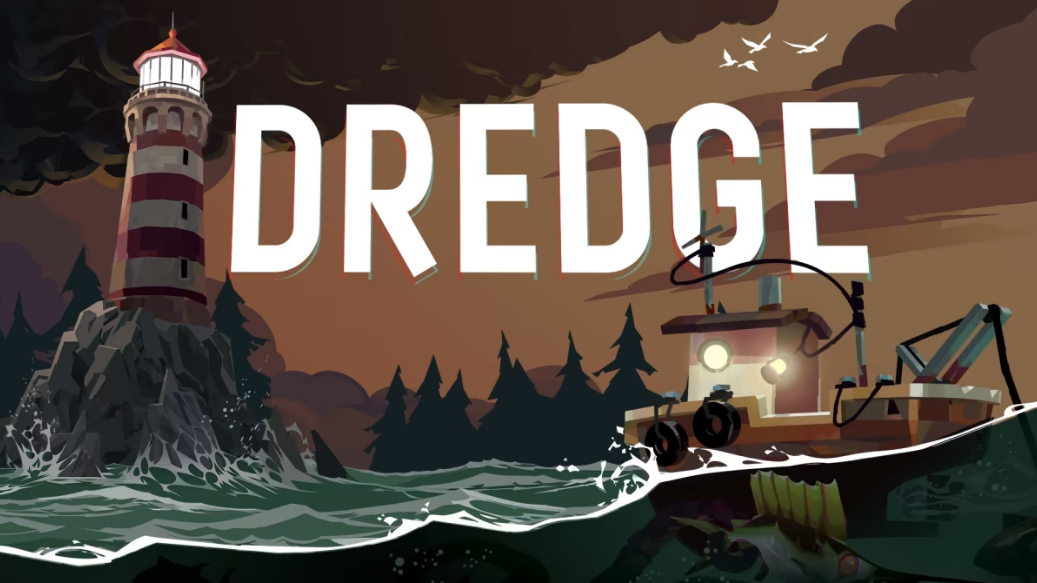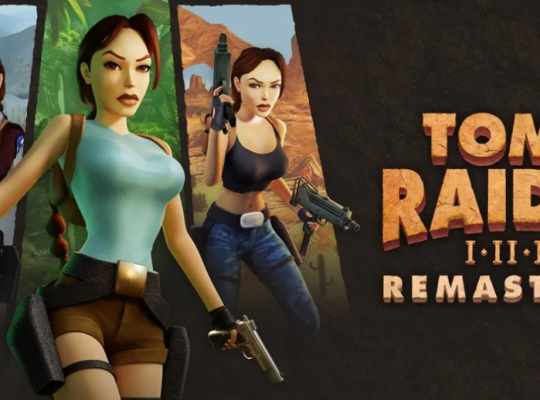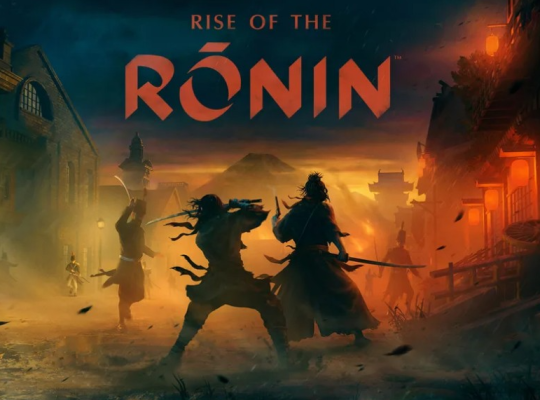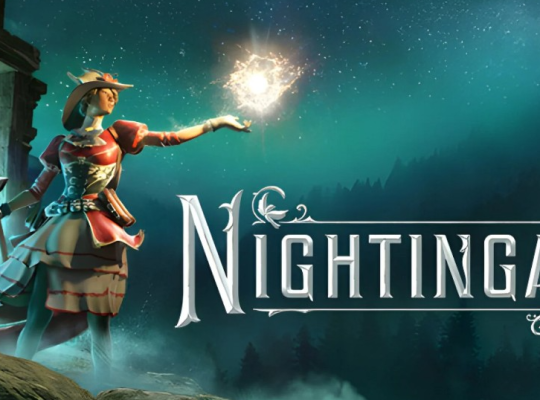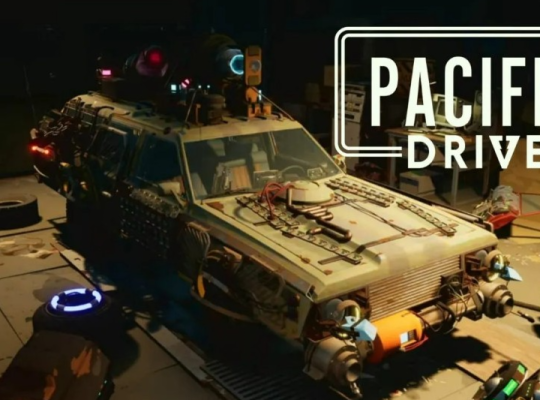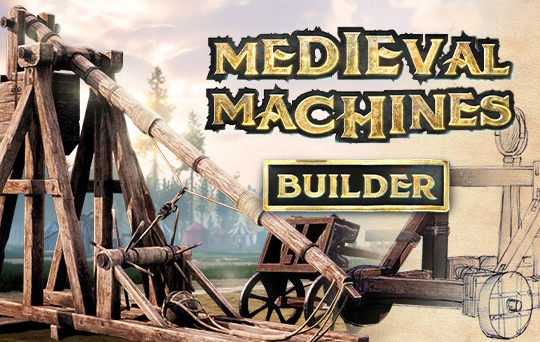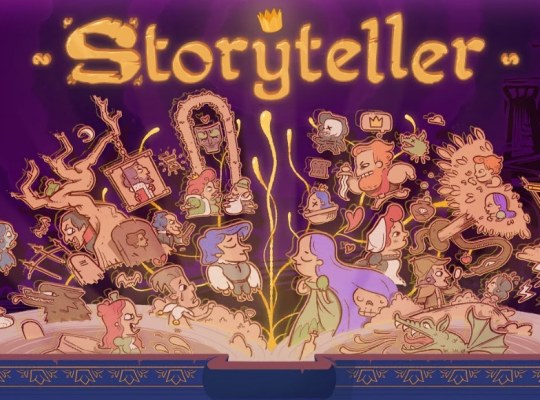Dredge: A Unique Blend of Tranquility and Horror
Dredge presents a distinctive cocktail of contrasting themes, seamlessly weaving the serene activity of fishing with the eldritch horrors of a Lovecraftian nightmare. The game capitalizes on the inherently eerie nature of the ocean, enhancing it with the ominous presence of creatures reminiscent of Lovecraft’s universe, particularly the lurking Cthulhu.
Overview
Dredge boldly confronts the horrors lurking beneath the surface as players navigate the peaceful act of fishing against the haunting backdrop of a Lovecraftian narrative. The game unfolds with idyllic scenes of daytime fishing set to gentle piano tracks, creating a tranquil loop of sailing, catching fish, and selling them for upgrades and tools. However, as dusk descends, the atmosphere takes a chilling turn, revealing the monstrous and mutated elements that define Dredge.
Life in Dredge embraces a Lovecraftian aesthetic, offering an enticing blend of ominous allure and addictiveness. The protagonist, an unnamed fisherman, finds himself stranded near the small island town of Greater Marrow. Tasked with repaying a small debt, the player embarks on a journey that begins with simple fishing tasks but quickly descends into the eldritch unknown.
The act of fishing itself is relatively straightforward, involving hitting a button when a moving target aligns with a green zone across Dredge’s various minigames. These minigames range in complexity, adding a layer of challenge to the fishing process. However, the true complexity emerges once the catch is secured, as players must strategically place fish of different shapes and sizes into the vessel’s tiled inventory.
The gameplay loop introduces a puzzle-like element, requiring players to strategize how to deplete each fishing spot efficiently before moving on. Beyond the catch, players can fish up materials for boat upgrades, each with its peculiar shapes to manage. Balancing the allocation of tiles for equipment, and engines, and maximizing fishing efficiency becomes a captivating aspect of the gameplay.
Each fish in Dredge comes with a freshness meter that influences its selling price. While the freshness rating adds a layer of challenge for a single side quest, its impact feels somewhat superfluous in the overall experience. Frequent trips to sell catches prevent most fish from reaching stale or rotten ratings, diminishing the significance of the freshness mechanic.
In essence, Dredge provides players with an intriguing fusion of tranquility and horror, setting a new standard for 2D fishing platformers by seamlessly blending contrasting elements into an engaging and atmospheric experience.
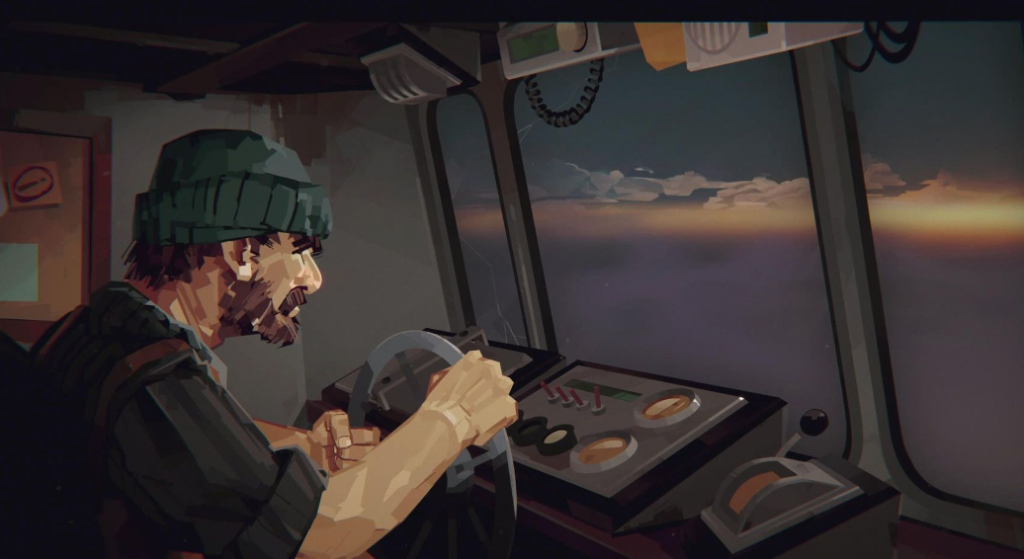
Dredge: Sailing into Adventure
As I sail through the waters of Dredge, I find myself not only paying off debts to Greater Marrow’s enigmatic mayor but also assisting residents with intriguing side quests. A distant island beckons, marking the beginning of the true story and its perils.
The scattered relics across four surrounding islands become the focal point, urging me to dredge them up and return them to a mysterious collector on an island shrouded in curiosity. Each island introduces its challenges—Gale Cliffs harboring a giant lurking monster between rock faces, and Stellar Basin plagued by vicious tentacles that threaten my vessel unless appeased.
Exploring each island unveils new fish to catch, quests to complete, and dangers to overcome. While I relish the challenges presented by most islands, my primary frustration stems from Gale Cliffs—the first area beyond Greater Marrow. Dealing with the elusive snaking monster without a clear method proved to be the most annoying obstacle, potentially serving as a roadblock for frustrated players.
Various solutions exist for overcoming such challenges, and one involves delivering relics to the collector, who grants mystical abilities. These abilities, however, come at a price. As I am bestowed with a haste ability before heading to Gale Cliffs, allowing swift navigation even with an old engine, I notice the onset of a panic meter—an eye at the top of my screen opening erratically as days and nights pass.
Increasing panic levels bring about terrifying experiences—hallucinations of red-eyed crows, shadow ships approaching, and monstrous entities emerging from the waters. While I can partially offset the nighttime panic through skill books and additional lights on my boat, the paranoia persists.
Dredge cleverly forces me to take risks by having certain fish appear only at night, pushing me out of my comfort zone. However, the short day-night cycles encourage playing it safe. Upgrading my ship, thanks to money, materials, and research parts dredged from the sea, provides a means to navigate the waters more efficiently. Yet, the scarcity of research parts, especially with numerous equipment upgrades, feels like a lengthy venture. Despite this, progression remains well-paced, with around 90% of the upgrades obtained in my 20 hours with the game. However, a slight increase in the rate of research parts could have significantly enhanced the overall experience.
Dredge: A Twisted Tale of Fishing and Horror
In Dredge, anxiety is not the sole horror plaguing my unfortunate fisherman. The catches from the sea bring forth aberrations—twisted variations of fish that range from mildly peculiar multi-eyed creatures to gruesome, gouged skates with corroded skin and unhinged jaws. While the art direction in Dredge is already stunning, these moments of horror add an oddly captivating layer to the visuals. The pursuit of these warped forms kept me engaged long after rolling credits on the game’s short yet sweet story.
The narrative in Dredge is noteworthy as well. While a part of me desires more story content for in-depth analysis, some predictable elements were apparent. However, Dredge chooses to tell its story through NPC dialogues, message bottles floating in the sea, and obscure side quests tucked away on tiny islands. Piecing together the narrative through these diverse channels proved to be an enjoyable experience, with certain time-sensitive side quests capturing my attention significantly.
Moreover, none of the quests are conveniently tracked on the map, requiring me to rely on my fisherman’s instincts and memory. Vague descriptors on the Pursuits board offered some guidance, but the rest was left to my recollection. Despite my inherent directional challenges, this approach encouraged me to observe my surroundings, identify landmarks, and enhance my navigational skills.
Dredge, with a completion time of 10 to 15 hours, offers a compelling experience. If you have a penchant for horror and enjoy engaging fishing minigames, this game is tailored for you. While not flawless, with occasional frustrating moments amid its otherwise excellent bite-sized adventure, I find myself drawn back to explore its twisted encyclopedia and rectify the missteps in certain side quests.
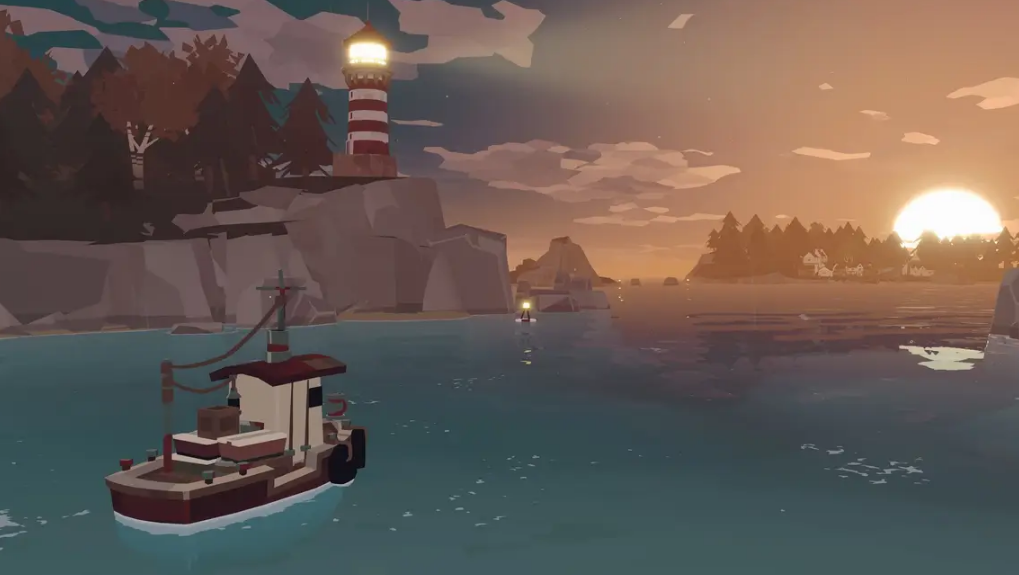
Dredge: A Captivating Catch
Above all else, Dredge exudes a compelling charm that draws you in, akin to the subtle influence of an ancient eldritch monster nibbling on your thoughts. It’s a game that beckons, a call of the sea that lingers even after the initial encounter, despite the criticisms I’ll delve into later.
In Dredge, you navigate the waters, engaging in the art of fishing with a vast array of sea life. However, it’s not just about the catch; the game weaves a story of cryptic mystery, presents side quests, and introduces clever puzzles that blend the concepts of fishing and eldritch horror.
Understanding the depths of the narrative requires attention to numerous small details and examination of various notes found throughout the game. Initially, the ending felt like a sudden impact until the realization dawned that there was more than one conclusion, and I had unwittingly sailed into the unfavorable one. A second playthrough brought clarity, unraveling an intriguing tale that seamlessly fits into the realm of Lovecraftian despair.
The primary source of income in Dredge comes from selling the collected fish. Additionally, players can dredge up materials to enhance their vessel—expanding cargo space, upgrading engines for speed, acquiring new fishing equipment, or installing brighter lights. The progression system is gratifying, offering tangible impacts with each upgrade.
The diverse range of fish demands specialized gear based on their habitat, whether coastal, oceanic, shallow, or even volcanic. Beyond fishing and dredging, players can employ crab pots to capture crabs over time and drag nets to collect species while sailing.
Both fishing and dredging involve enjoyable mini-games that contribute to the overarching puzzle of the game, incorporating elements like cargo space and time. Dredge provides a captivating experience that goes beyond the thrill of the catch, blending narrative intricacies and engaging mechanics into a harmonious gaming experience.
Dredge: Nightly Terrors
As the sun sets in Dredge, panic begins its ascent. The longer you linger in the darkness, the higher your panic climbs, attracting the unseen forces that dwell in the shadows. Illusions may play tricks on your senses, revealing nonexistent islands or casting buildings in ominous shadows as you sail. However, the fear extends beyond mere illusions.
Navigating in the dark poses dangers, with the risk of crashing or running aground heightened. Rocks may appear suddenly in your path, visible only by the glow of your lights. Aboard your vessel, unseen threats may manifest—something slithering to infect your fish, swarming crows, adverse weather conditions, or attacks from aberrant sea creatures. Dredge intentionally keeps the details of dealing with these dangers vague, adding an element of discovery to finding effective ways to avoid or minimize the damage.
Confrontation is not an option, but the game equips you with tools to ensure your safety. Even sunlight doesn’t guarantee salvation, as some dangers persist into the morning if your panic remains high. Sleeping or staying in bright light gradually reduces panic, restoring safety.
The Lovecraftian atmosphere and the imminent danger it introduces complete the gaming experience, making Dredge thoroughly entertaining. It serves as a stark contrast to the serene exploration and fishing activities, preventing the game from descending into monotony by infusing real peril into your seafood quests. The threats emphasize the significance of your upgrades—faster engines, brighter lights, and stronger hulls become crucial for surviving the lurking dangers in the shadows.
Dredge: Navigating a Charming Seascape
As previously mentioned, Dredge’s charm extends beyond its gameplay to the intricacies of its world. While the game provides guidance, you have the freedom to sail in any direction, tackling the main quest tasks in almost any order. The five distinct regions each offer a unique flavor, featuring diverse species of fish, specific dangers, aesthetics, and mini storylines.
In one region, you may navigate between cliffs, contending with falling rocks while being pursued by a one-eyed serpent. Another region involves aiding a scientist in collecting fish amid a deadly reef guarded by a giant tentacled beast. A foggy jungle region presents shifting roots, creating a dynamic maze, while a volcanic area is patrolled by a blind predator whose hungry offspring can draw her attention.
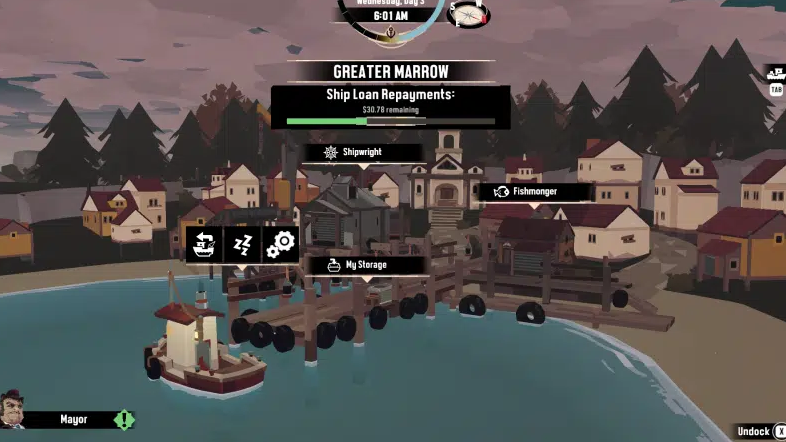
Each region boasts its main quest, side quests, and puzzles, necessitating research and upgrades of different gear. Beyond standard fish, every species has at least one aberrant version to collect, adding a tempting Pokedex-like encyclopedia element. The gameplay is compelling, enjoyable, and addicting in a manner only simulation games can achieve.
The allure of completing the aberrant variants had me often saying I’d take a break after just one more fish, scouring the area for a particular species. Additionally, almost every side quest offers rewarding outcomes, with numerous specialized gear discoveries tied to solving mysteries in each region.
While the night introduces spooky random events, exploring during the daytime reveals the natural beauty of the surroundings. From turtles paddling along to pods of dolphins or orcas swimming alongside you, or even a breaching whale, Dredge captures a serene atmosphere with every splash of water. The game exudes charm, making the journey across its seascape thoroughly enjoyable.
Dredge: Illusions in the Hull
Regrettably, the darkness isn’t the sole bearer of illusions in Dredge. The game sings a false tune like a siren unveiling its hideous form just before a ship meets its demise on the rocks.
The initial description of the game suggests a simulation punctuated by eldritch horror, capturing my attention and fueling my expectations. In the opening hour, Dredge effectively introduced me to the basics of fishing and cargo management, aligning with my initial understanding.
As special orders for specific species were introduced, accounting for variations in regions, day or night cycles, and different depths, I was immersed and satisfied with the game’s direction. The concept of dangers in the dark and the pursuit of aberrant fish heightened my anticipation. However, as the game propelled me into fulfilling the next order, it swiftly shed its simulation facade. Dredge, it turns out, is not a simulation game; rather, it masquerades as one. At its core, it’s an exploration puzzle game that utilizes fishing as the catalyst for its world design.
Dredge: A Visual Delight in the Sea of Gaming
Gerard: Part of the charm of Dredge lies in its wondrous art style. Featuring a hand-drawn feel with chunky shapes and defined edges in bright colors, it provides a delightful visual experience. Navigating through rolling waves or exploring treacherous cliffs to uncover relics and mysteries evokes a magical calm.
Richard: In a realm dominated by HD super-defined graphics, Dredge adeptly fulfills its role. It offers a satisfying diversion wrapped in a beautiful package. Seamlessly blending narrative, crafting, and fishing, the game is adorned with a comforting and unique art style. The atmospheric elements, from wisps of wind to the rolling waves, contribute to the overall completeness of Dredge.
Gerard: I’ll keep this brief because people simply need to play Dredge. Whether it’s the connection to the developers in my city or the genuine captivation, the game is visually delicious and exudes a charm that deserves a broad audience. I wholeheartedly recommend this experience. And let’s not forget the delightful soundtrack with its “sea shanty, yo-ho-ho” vibe, featuring strong accordion usage for accordion enthusiasts.
Richard: Absolutely, PAXAUS left me with few memorable moments last year, but Dredge was a highlight. The game has delivered, and BlackSaltGames is poised for recognition. The success Dredge deserves is evident, as seen in your interview with the team. I’m eagerly anticipating their future endeavors.
Dredge: A Love/Hate Relationship
My sentiments toward Dredge oscillate between love and frustration. It stirs within me a desire for a simulation game blending fishing with survival against eldritch monsters—a game that, regrettably, doesn’t exist. However, I find myself enamored with Dredge as it comes closest to realizing that tantalizing concept. It is a significant tease, providing an enjoyable experience, yet I consistently yearn for more.
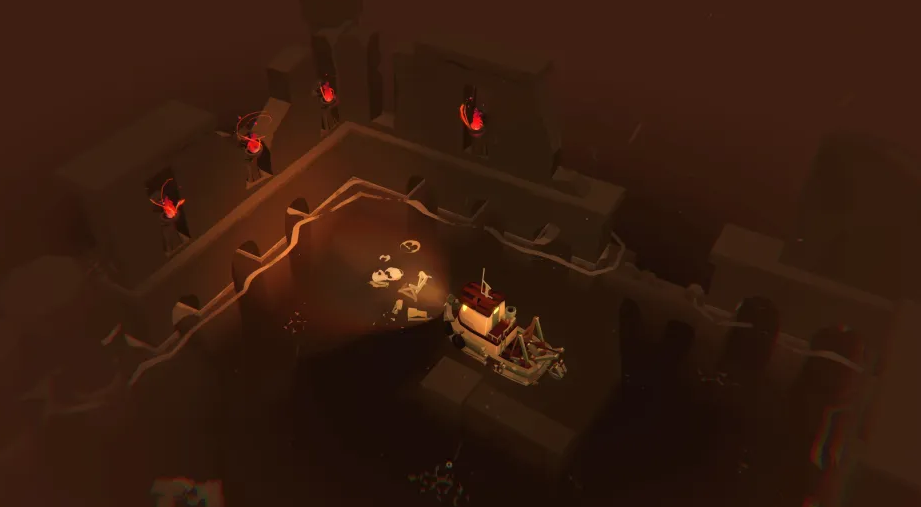
The game seems to have undergone a mid-development genre shift, transitioning from the initial niche idea, closer to a simulation, to a more accessible adventure puzzle game with a fishing theme. Despite this shift, I appreciate Dredge for what it is—an engaging adventure puzzle game with a captivating concept and atmosphere.
However, the longing for what could have been accompanies every fish I catch. I still derive enjoyment from capturing them, discovering aberrant versions, and delving into their descriptions. Managing cargo space and gathering materials for upgrades remains enjoyable, but I crave a more impactful experience. With two new modes planned for Dredge, there’s hope that one will align better with my expectations.
While not an extensive game, I completed the main story in around six hours, yet continued playing for additional content. As I strive to complete the fish encyclopedia, I find myself investing more time, akin to becoming a Pokemon master—having caught them all, albeit smelling like fish and rambling about crab people consuming brains. Despite this, Dredge offers ample playtime for those exploring side content.
In essence, Dredge stands as a charming, atmospheric game with excellent exploration gameplay and clever puzzles, accompanied by moments of tense fear and dread in the dark. My only wish is for it to lean further into the simulation aspect it initially presented, as Dredge lures players with the promise of a fishing sim with horror elements, ultimately delivering an enjoyable adventure puzzle game with simulation elements as an afterthought.
Read More – Death Stranding Review: Unraveling the Enigma of an Action Game







